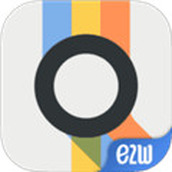Cardano (ADA) is up 40% year-to-date, of which 31% were accrued in October alone. This results from a growing demand for its native token that investors can stake in exchange for staking rewards.
Notably, Cardano is the third-largest cryptocurrency by Staking Market Cap, according to data from StakingRewards.com. As of November 7, there is $7.94 billion at stake in Cardano’s network, for a total of 22.98 billion ADA tokens locked by validators and delegators in the protocol.
With a market capitalization of $11.83 billion, 63% of all ADA in existence are locked into the protocol’s staking system. These validators are expected to be rewarded yearly at 3% of the staked amount. However, with a “Real Reward Rate” — adjusted by Cardano’s supply inflation — of 0.38% per year.

Stake ADA stats. Source: Staking Rewards (Cardano)
Cardano price analysis
Meanwhile, Cardano’s monthly chart reflects the growing demand for staking in a bullish uptrend. ADA is trading at $0.34 by press time, going as high as $0.37 on November 6, which rendered the token a 4.3% loss intraday.
Moreover, Cardano has accumulated gains of 16% in the week as its capitalization surged by $2 billion. In the meantime, ADA is trading close to its price of one year ago at $0.40 per token. This zone marks an important resistance that must be broken for investors to see higher levels.

ADA 1-month price chart. Finbold
Cardano’s ability to break the $0.4 zone will depend on whether demand can continue to grow in its ecosystem.
Essentially, the rising trend for Cardano staking is a good sign that investors are not willing to sell but rather to stake their acquired ADA. Further news and developments might influence this cryptocurrency’s performance in the following weeks.
Disclaimer: The content on this site should not be considered investment advice. Investing is speculative. When investing, your capital is at risk.















